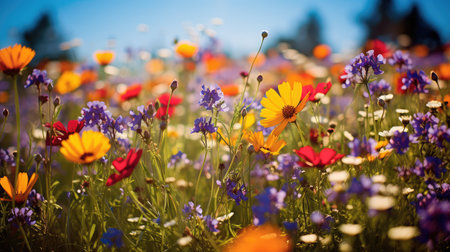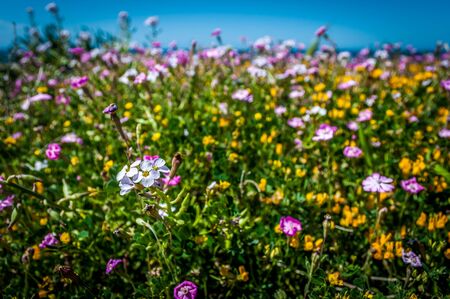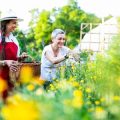Introduction to Native Wildflowers
When we think about American landscapes, native wildflowers often stand out as vibrant threads woven into the fabric of our local ecosystems. But what exactly are native wildflowers? In simple terms, native wildflowers are flowering plants that have evolved naturally in a specific region, adapting over thousands of years to the local climate, soil, and wildlife. Unlike ornamental or imported species, these plants form the backbone of their natural habitats. Their roots run deep—both literally and figuratively—supporting not just pollinators like bees and butterflies but also birds, small mammals, and even soil health. In urban neighborhoods and rural communities alike, native wildflowers play a crucial role in preserving biodiversity and cultural heritage. By understanding their importance, we can better appreciate how these resilient blooms help maintain balance in our ever-changing environments.
Ecological Benefits of Native Wildflowers
Native wildflowers play a critical role in supporting local wildlife and enriching the biodiversity of urban and suburban environments across the United States. Unlike ornamental or non-native species, native wildflowers have evolved alongside local fauna, making them perfectly suited to meet the needs of indigenous pollinators and other creatures. By offering reliable sources of nectar, pollen, and seeds throughout the growing season, these plants become lifelines for bees, butterflies, birds, and even small mammals.
Supporting Local Pollinators
Pollinators are essential for healthy ecosystems and food production. Native wildflowers provide crucial foraging habitat for a variety of pollinator species, many of which are experiencing population declines due to habitat loss and pesticide use. When you plant native wildflowers on your balcony or in your small city garden, you create a micro-habitat that supports:
| Pollinator | Wildflower Benefit |
|---|---|
| Bees (native & honeybees) | Nectar and pollen sources; nesting material |
| Butterflies | Host plants for larvae; nectar for adults |
| Birds (e.g., hummingbirds) | Nectar from tubular flowers; seeds after blooming |
Biodiversity Boosters
Diverse native wildflower plantings encourage a rich tapestry of life by providing food and shelter at different times of year. This biodiversity helps stabilize urban ecosystems and makes local landscapes more resilient to pests and diseases. For example, monarch butterflies rely exclusively on milkweed species as host plants for their caterpillars—a relationship that highlights how specific wildflowers can be keystone species within local habitats.
Sustainable Urban Living
Incorporating native wildflowers into small outdoor spaces—like apartment balconies or rooftop gardens—not only beautifies the neighborhood but also strengthens ecological connections in American cities. These green pockets help restore fragmented habitats, inviting wildlife back into our daily lives while promoting a deeper appreciation for the natural world right outside our door.

3. Role in Urban and Suburban Landscapes
Native wildflowers aren’t just for meadows or rural fields—they play a powerful role in transforming America’s urban and suburban environments. As cities grow denser and green space becomes more limited, integrating native wildflowers into city gardens, small yards, and even balconies offers a practical way to support local ecosystems right where we live.
City Gardens: Bringing Nature Closer
In American cities, many residents are turning to community plots, rooftop gardens, and pocket parks to add greenery to their neighborhoods. Planting native wildflowers in these spaces creates vital habitat for pollinators like bees and butterflies that struggle with concrete landscapes. These flowers require less maintenance and water than non-native ornamentals, making them perfect for busy urbanites who want a splash of color without the hassle.
Small Yards: Maximizing Limited Space
Suburban homes often have modest yards, but even a tiny plot can become an ecological haven. Swapping out part of a lawn for a mix of regionally adapted wildflowers reduces mowing, saves water, and invites songbirds. Native plants naturally thrive in local conditions, so they’re resilient against pests—no need for harsh chemicals. This not only benefits wildlife but also helps families enjoy healthier outdoor spaces.
Balconies: Urban Wildlife on Your Doorstep
You don’t need a backyard to make a difference—balcony gardeners across the U.S. are discovering how easy it is to grow native wildflowers in containers. Even a few pots can attract pollinators and provide essential food sources for urban insects and birds. Plus, the ever-changing blooms bring beauty and a sense of connection to nature, right outside your apartment window.
By weaving native wildflowers into city gardens, small yards, and balconies, Americans can help restore ecological balance within urban ecosystems. These simple choices create corridors of habitat across neighborhoods, supporting biodiversity and building greener, more sustainable communities from the ground up.
Climate Adaptation and Resilience
Native wildflowers have evolved over centuries to thrive in the unique climate and soil conditions found across various regions of the United States. Their deep-rooted adaptation gives them a significant advantage over non-native species, making them an essential component for sustainable gardening, especially within urban environments and small spaces like city balconies.
Unlike imported ornamentals, native wildflowers are inherently resilient to local weather patterns—including droughts, temperature fluctuations, and rainfall extremes—which helps gardeners reduce their reliance on supplemental watering and chemical inputs. For example, California poppies are drought-tolerant and flourish in dry, sandy soils, while Black-eyed Susans adapt well to the humid summers of the Midwest.
How Native Wildflowers Match Local Conditions
| Region | Common Wildflower | Key Adaptation |
|---|---|---|
| Northeast | New England Aster | Tolerates cool temperatures and moist soils |
| Southeast | Coreopsis | Thrives in hot, humid climates with varied rainfall |
| Midwest | Black-eyed Susan | Drought-resistant and tolerant of clay soils |
| Southwest | Desert Marigold | Adapts to arid conditions and poor soils |
| Pacific Northwest | Camas Lily | Loves damp winters and dry summers; thrives in rocky or clay soil |
Sustainable Gardening Benefits in Urban Spaces
Cultivating native wildflowers is particularly beneficial for small-space gardeners looking for low-maintenance yet vibrant landscapes. Because these plants are adapted to their local environment, they require less fertilizer, water, and pest control—key factors for sustainable urban gardening. In addition, their resilience makes them ideal for rooftop gardens or balcony planters that may face intense sun or wind exposure.
Urban Gardeners Quick Tips:
- Select region-appropriate wildflower seeds: Check your USDA Plant Hardiness Zone before planting.
- Mimic natural soil conditions: Use native soil blends or amend with compost to match local needs.
- Water wisely: Once established, native wildflowers generally need little extra water beyond normal rainfall.
- Avoid synthetic chemicals: Let beneficial insects thrive by steering clear of pesticides.
The climate resilience of native wildflowers not only supports pollinators and wildlife but also empowers Americans to create sustainable green spaces—even on city balconies or compact patios—while reducing environmental impact.
5. Supporting Conservation Efforts
Understanding the role native wildflowers play in conservation, restoration projects, and rebuilding local habitats is essential for protecting America’s natural heritage. Native wildflowers are not just beautiful additions to urban yards or balcony gardens—they are crucial players in ecological restoration efforts across the country. By integrating these plants into public parks, roadside landscapes, and community green spaces, conservationists can help restore balance to environments that have been disrupted by development, agriculture, or invasive species.
Native wildflowers support biodiversity by providing food and shelter for pollinators, birds, and small mammals. Their deep root systems help stabilize soil, reduce erosion, and improve water quality by filtering runoff before it reaches streams and rivers. These benefits make them a go-to choice for ecological restoration projects from the prairies of the Midwest to the coastal dunes of California.
Community involvement is also key. Across the United States, grassroots initiatives encourage residents to plant native wildflowers in their own outdoor spaces, contributing to larger conservation goals. Even small patches of native plants on city balconies or backyard corners can become stepping stones for wildlife, connecting fragmented habitats and supporting migration corridors.
Ultimately, embracing native wildflowers is about more than aesthetics—it’s a commitment to supporting local ecosystems and building resilient communities. Whether you’re volunteering with a local restoration project or simply adding a few native blooms to your patio pots, every effort helps sustain the intricate web of life that makes each region unique.
6. Community Involvement and Resources
Getting Hands-On with Native Wildflowers
Engaging with native wildflowers isn’t just for botanists—it’s something everyone in the community can participate in, whether you have a sprawling backyard or a tiny urban balcony. By joining forces with neighbors, local schools, or gardening groups, you can help create pollinator-friendly spaces that support both wildlife and people.
Ways to Get Involved Locally
- Join Local Planting Events: Many city parks departments, botanical gardens, and conservation organizations host seasonal wildflower planting days. These events are great for meeting like-minded people and learning more about the plants native to your region.
- Start a Community Garden: Even in dense urban neighborhoods, small plots of land or shared spaces can be transformed into native plant havens. Consider collaborating with neighbors to start a wildflower patch in a vacant lot or rooftop.
- Create a Mini Meadow at Home: Whether you have a yard, balcony, or window box, you can plant native wildflowers in containers. This is an easy way to bring biodiversity right to your doorstep and encourage others by example.
- Advocate for Native Landscaping: Support local policies that promote the use of native plants in public spaces. Attend city council meetings or participate in local environmental committees to voice your support.
Resources to Help You Get Started
- National Wildlife Federation’s Garden for Wildlife™ Program: Offers region-specific plant lists and guidance for creating habitat gardens.
- Audubon Society’s Plants for Birds Database: Find out which wildflowers attract birds in your area using their interactive tool.
- PlantNative.org: Features directories of nurseries selling native plants and educational materials tailored for different U.S. regions.
- Your state’s Cooperative Extension Service: Provides localized advice on growing and maintaining native wildflowers.
Building a Wildflower-Friendly Community
From neighborhood initiatives to personal projects, everyone can play a role in preserving the natural beauty and ecological benefits of native wildflowers. With these resources and some community spirit, its easy to turn any space—no matter how small—into an oasis that supports local ecosystems for generations to come.


